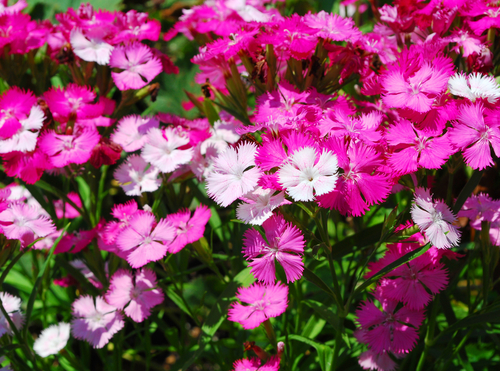Darin Engh, from Engh Gardens, shows us how to plant a rose garden that will capture your imagination.
ROSE GARDENS are a traditional feature of parks and gardens, yet they are often gaunt and bare for much of the year and feature only modern hybrids with scentless flowers. Plant a rose garden that is different, concentrating on the old-fashioned varieties with flowers mostly in subtle shades of pink, and nearly all have an excellent scent. This selection will either flower continuously from early to late summer or will repeat flower in late summer after their main, early summer season.
Roses look so much better when grown in company with geraniums, artemisias, and various other perennials. These not only complement the colours of the roses but also minimize weeding underneath them.
MAINTENANCE – Pruning should really be left until the plants are becoming too big and untidy for their situation. Then it should be carried out in late winter, removing dead and unhealthy-looking stems, and any that are relatively thin and weak, crossing or overcrowded. The remaining strong stem should be cut back by one-third. Feeding and composting should be done for poor or sandy soils. As much as possible should be done to enrich poor soils by mulching and feeding.
Sweetly perfumed rose and long-blooming perennials happily mingle together. A rose garden that can be enjoyed from the backyard deck, as well as the surrounding landscape. The roses and perennials come into glorious bloom in mid-June, revealing flushed pastel, multi-petal flowers for several weeks. After a brief siesta in the heat of summer, the roses and perennials stage a small second bloom at the end of August and into September.
Silver-leaf lavender and lambs’-ear skirt the roses, along with perennial salvia, lady’s mantle, and sedum.
KNOWING THE FORMS – When selecting roses for your garden, the architectural shape and ultimate dimensions are important. They give form to the landscape and proportion to its elements. You can grow roses almost anywhere that gets six hours of sun. How a rose is used in the landscape—as an accent, a hedge, or a backdrop in a border—also determines which one is best.
Romantica (old-fashioned) roses, prized for their old-fashioned appearance, strong fragrance, and disease resistance. Vigorous plants, Romantica roses can easily grow to 4-5 feet tall and must be pruned annually to maintain a manageable size. Heavy flowering plants, they produce plenty of blooms to perfume both the landscape and the living room.
Patio Tree forms are a wonderful way to grow floribundas or miniatures about 4 feet off the ground. Excellent for container.
Floribundas are known for their large clusters of medium-sized blooms that cover the bush all season long. Usually grows to about 3 feet high.
Hybrid Tea—the cut flower par excellence, easily recognized for the single, sculptural, high-centered bloom per long stem. The florets are usually large and symmetrical. Can reach up to about 5 feet high.
Climbing roses is perhaps the most dramatic way to use roses in the landscape. They elevate blossoms to eye level and higher, creating a vertical display that most perennials and annual just can’t compete with. Climbing roses are actually a shrub with long, arching stems, these roses grow 6 to 20 feet high when trained on walls, trellises, and fences. Train the long canes in a horizontal position to promote bloom production.
Grandiflora are similar to hybrid teas, but identified by their unique ability to send up clusters of large hybrid tea-type blossoms on strong straight stems. Plants are normally 6 to 8 feet tall.
Shrub roses—recent hybridizing breakthroughs that combine old garden rose flower form and fragrance with modern colors and recurrent blooms. Plant are 6 to 7 feet high.
Groundcover roses—a landscaping category of vigorous, disease-resistant, low-growing plants that spread up to 8 feet wide fro bedding and massing.
Other Companion Plants
With White Roses:
• Boxwood
• Garden Pinks (Dianthus)
• Stonecrop (Sedum)
• Lady’s Mantle
• Campanula Bellfower
• Snow-in-Summer
• Artemisia
• Baby’s Breath
• Lamb’s Ear
With Red Roses:
• Stonecrop (Sedum)
• Catmint
• Lavender
• Larkspur
With Yellow Roses:
• Catmint
• Lavender
• Licorice Plant
• Creeping Thyme
• Lamb’s Ear
With Pink Roses:
• Stonecrop (Sedum)
• Lady’s Mantle
• Campanula
• Diascia
• Hardy Geranium
• Wooly Thyme
• Lamb’s Ear
• Catmint
• Plumbage
• Lavendar
For more information, you can contact Darin at Engh Gardens in Sandy or online at www.enghgardens.com.















Add comment